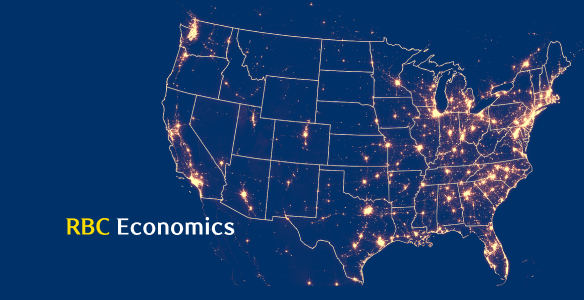The Bottom Line:
The marginal 0.2% decline in February real Canadian GDP was a reflection of a combination of factors including volatility in mining and oil and gas extraction industry, bad weather, end of government GST holidays and softer consumer and business sentiment due to escalating trade uncertainty.
March’s prelim estimate showed a partial rebound of 0.1%. That would leave activities overall up (an annualized) 1.5% in Q1 which is slightly below our and Bank of Canada’s tracking of 1.8%. The increase in March won’t retrace all of the decline in February, but was still better than feared given tariffs and counter tariffs levied at the beginning and in the middle of that month.
Indeed, softening in the economy since January due to tariffs is not to be discounted, but the GDP data and our own tracking of RBC card spending are both suggesting some resilience remain.
Looking forward, we expect direct tariff impact will be relatively contained but a weaker US economy will continue to spill over and negatively impact Canada. Growth in GDP is expected to halt in the coming quarters while the unemployment rate edges higher into the second half of this year.
The Details (February Canadian GDP recap):
-
Most of the 0.2% decline in February GDP was led by a 2.5% drop in (the often volatile) mining component, including a 2.8% drop in oil and gas extraction and a 2.6% drop in other mining output (coal mining down almost 15% and metal ore mining down 2.5%.)
-
But weakness likely also reflected the impact of a sharp pullback in consumer and business confidence as U.S. tariff threats escalated. A sharp pullback in home resale activities pushed residential building construction and real estate and leasing lower.
-
Retail trade fell by 0.2% and accommodation and food services by 1%. Bad weather and the end of the GST tax holiday mid-month were likely both additional factors behind those declines.
-
Offsetting strength came from manufacturing. Output was up 0.6% driven by durable goods manufacturing. Part of the increase could be tied to surging goods imports in the U.S. as businesses seek to front-run incoming tariffs, and therefore can’t be relied on for future growth.
-
Elsewhere, activities in transportation and warehousing (-1.1%) were weighed down by severe snowstorm and rail strikes in February. Increased financial market activities continued to contribute to rising activities in financial investment services (+2.7%)
-
March’s preliminary estimate of a 0.1% increase in real GDP includes partial reversals in the weaker spots in February. Still, that would leave nearly all of the growth in the economy in Q1 to January.
This article is intended as general information only and is not to be relied upon as constituting legal, financial or other professional advice. The reader is solely liable for any use of the information contained in this document and Royal Bank of Canada (“RBC”) nor any of its affiliates nor any of their respective directors, officers, employees or agents shall be held responsible for any direct or indirect damages arising from the use of this document by the reader. A professional advisor should be consulted regarding your specific situation. Information presented is believed to be factual and up-to-date but we do not guarantee its accuracy and it should not be regarded as a complete analysis of the subjects discussed. All expressions of opinion reflect the judgment of the authors as of the date of publication and are subject to change. No endorsement of any third parties or their advice, opinions, information, products or services is expressly given or implied by Royal Bank of Canada or any of its affiliates.
This document may contain forward-looking statements within the meaning of certain securities laws, which are subject to RBC’s caution regarding forward-looking statements. ESG (including climate) metrics, data and other information contained on this website are or may be based on assumptions, estimates and judgements. For cautionary statements relating to the information on this website, refer to the “Caution regarding forward-looking statements” and the “Important notice regarding this document” sections in our latest climate report or sustainability report, available at: https://www.rbc.com/our-impact/sustainability-reporting/index.html. Except as required by law, none of RBC nor any of its affiliates undertake to update any information in this document.


